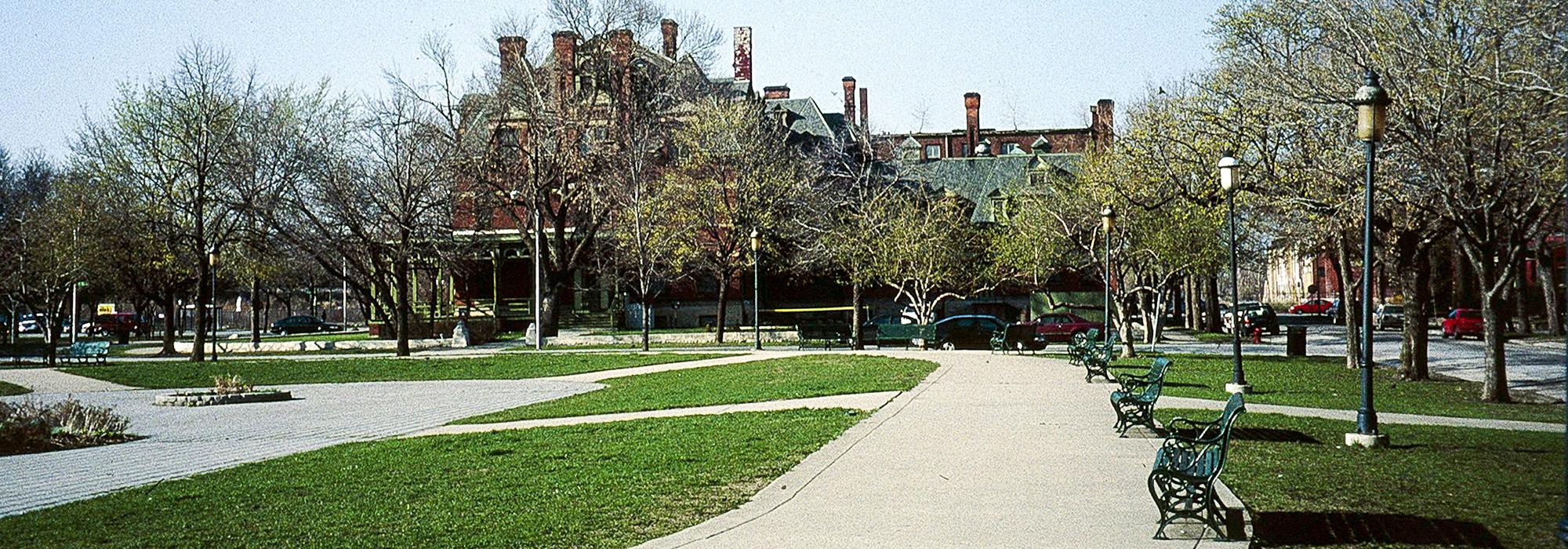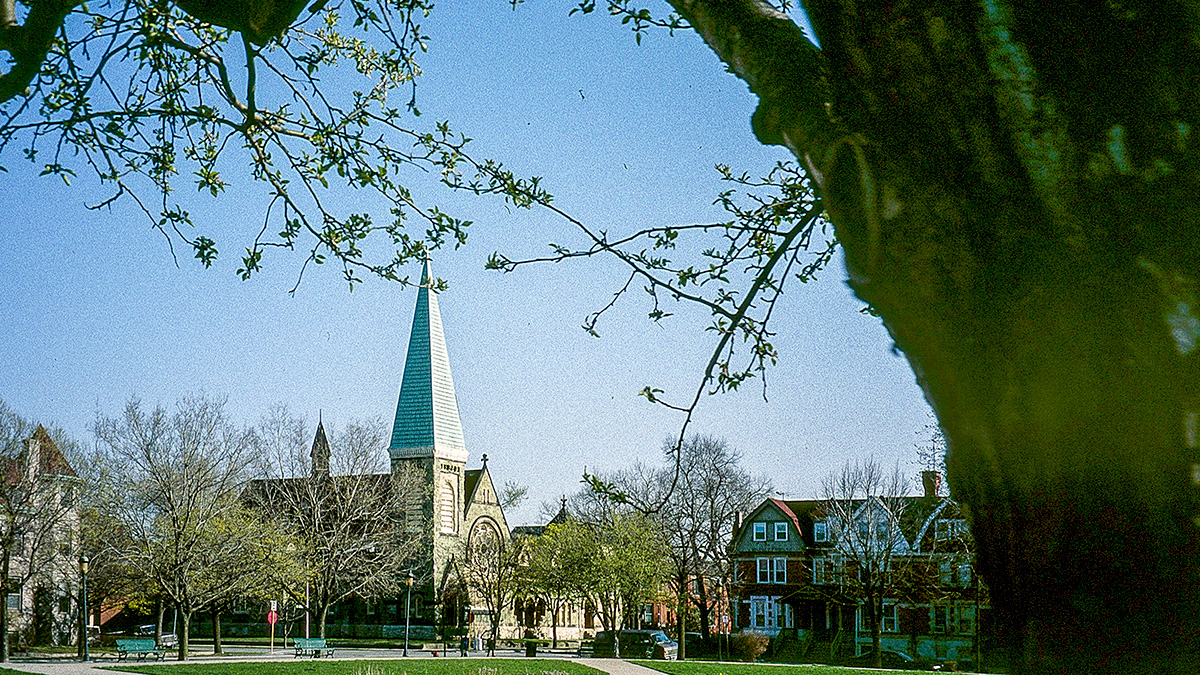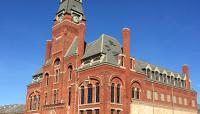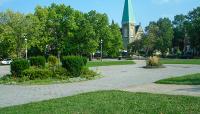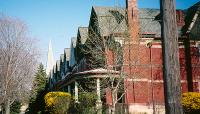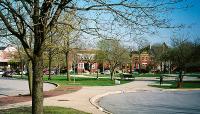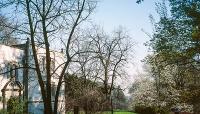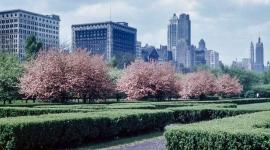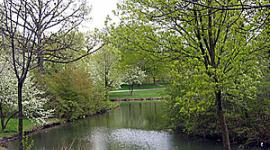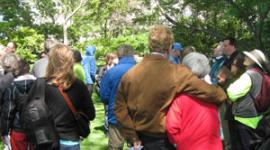Landscape Information
This 3,500-acre community lies twelve miles south of Chicago’s core. Founded in 1879 by George M. Pullman, founder of the Pullman Palace Sleeping Car Company, it was one of America’s first planned industrial towns and was solely owned by the Pullman Company. Architect Solon S. Beman and landscape architect Nathan Franklin Barrett designed the master plan in 1880 for a self-sufficient community in a gridded street pattern, which included a railroad car factory, hotel, church, arcaded market hall, school, civic buildings, and worker housing. The housing ranged hierarchically from detached Queen Anne houses to brick row houses, apartments, and blockhouse tenements, and was meant to reinforce class distinctions. Streets were lined with concrete sidewalks and wide lawn panels planted with deciduous street trees. Other landscaping was limited to ornamental gardens in front of the Hotel Florence and to two public parks, Pullman and Arcade.
In 1894 the experimental community was deemed a failure when workers’ riots led to a nationwide railroad strike that required the intervention of federal troops. With the death of George Pullman in 1897, the Illinois Supreme Court ordered the Pullman Company to relinquish claim on all non-industrial holdings. By 1909 all the residential properties were privately owned and the two public parks were acquired by the City of Chicago. Pullman was threatened by urban renewal in the 1960s, and in 1969 it was made a State of Illinois landmark. In 1970 the entire district was designated a National Historic Landmark and in 2015 it was made the Pullman National Monument.



